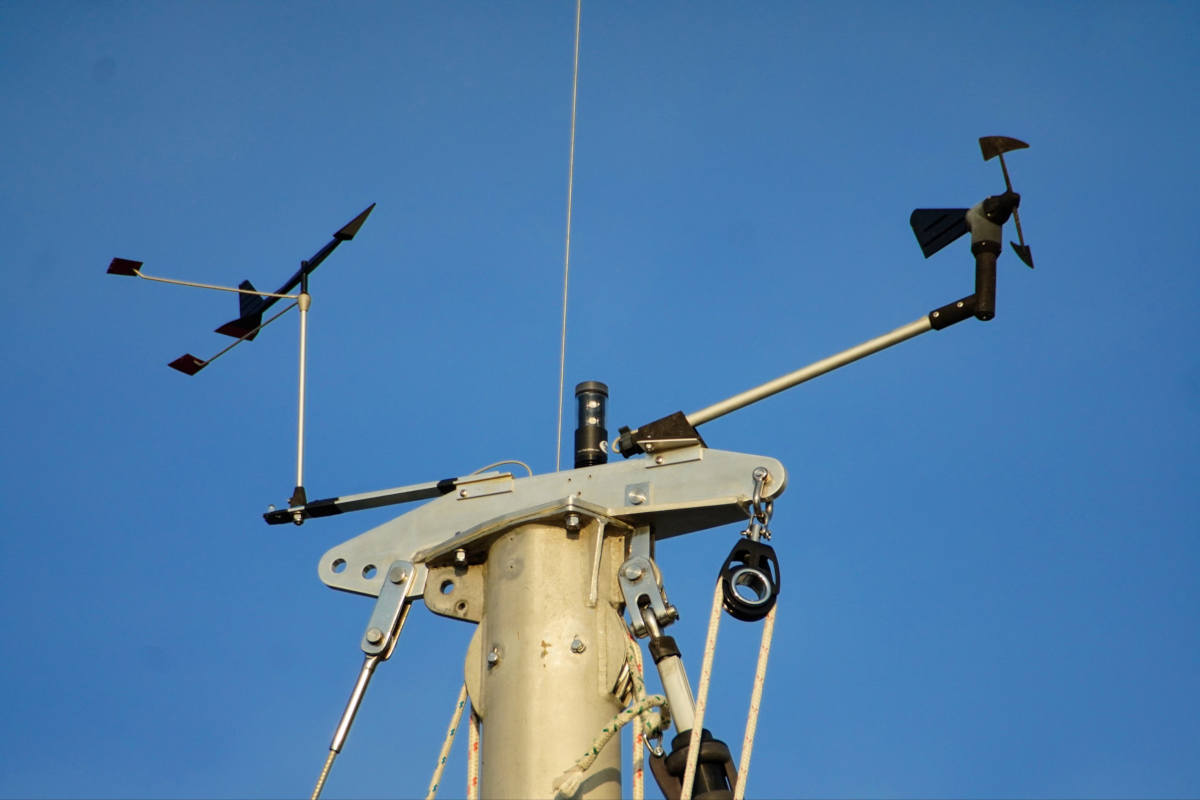Masthead Crane Details
 The masthead crane is made from two aluminum plates welded together in an upside-down T shape. The base is 3/8" thick and sits flat on the masthead. The vertical section is 1/2" thick to match the thickness of the shroud tangs on the OEM mast and extends out forward and aft of the base plate. To keep loads balanced in the crane the backstay attacthment was moved to the crane and two SS straps were added to connect the headstay to the crane. This way there is always some balance in the loads weather the jib is flying or the spinnaker.
The crane assembly added about 4 lbs to the masthead. I could cut some holes in it and save about 1.5 lbs. That doesn't really seem necessary on this rig.
The masthead crane is made from two aluminum plates welded together in an upside-down T shape. The base is 3/8" thick and sits flat on the masthead. The vertical section is 1/2" thick to match the thickness of the shroud tangs on the OEM mast and extends out forward and aft of the base plate. To keep loads balanced in the crane the backstay attacthment was moved to the crane and two SS straps were added to connect the headstay to the crane. This way there is always some balance in the loads weather the jib is flying or the spinnaker.
The crane assembly added about 4 lbs to the masthead. I could cut some holes in it and save about 1.5 lbs. That doesn't really seem necessary on this rig.
There's some interesting geometry to the masthead that should be considered in making mods like this. There's not a lot of info in the books I have but I found a little in Richard Henderson's book, "Understanding Rigs and Rigging" pages 50-51. Backstay tension is increased in stronger wind to de-power the sails. It does this by tightening the headsatay and/or bending the mast. Tightening the headstay de-powers the headsail and bending the mast depowers the main. This effect is pretty easy to see in a fractional rig where the backstay attached to the mast at a point higher than the headstay.
The effect can also exist in a masthead rig and how it is proportioned between mast bend and headstay tension is determined by the masthead geometry, specifically the bending moment created by the relative attachment points of the backstay and headstay. If the bending moment is zero then backstay tension will not bend the mast and will only add tension to the headstay. Moving the attachment point of the backstay aft (by extending the crane) increases the bending moment. Moving the headstay attachment point aft (by tapering the mast) also increases the bending moment. Either of these changes to the geometry will mean more of the backstay tension is used to bend the mast. The headstay will still be tightened but the split in tension is increased towards mast bend.
| 
